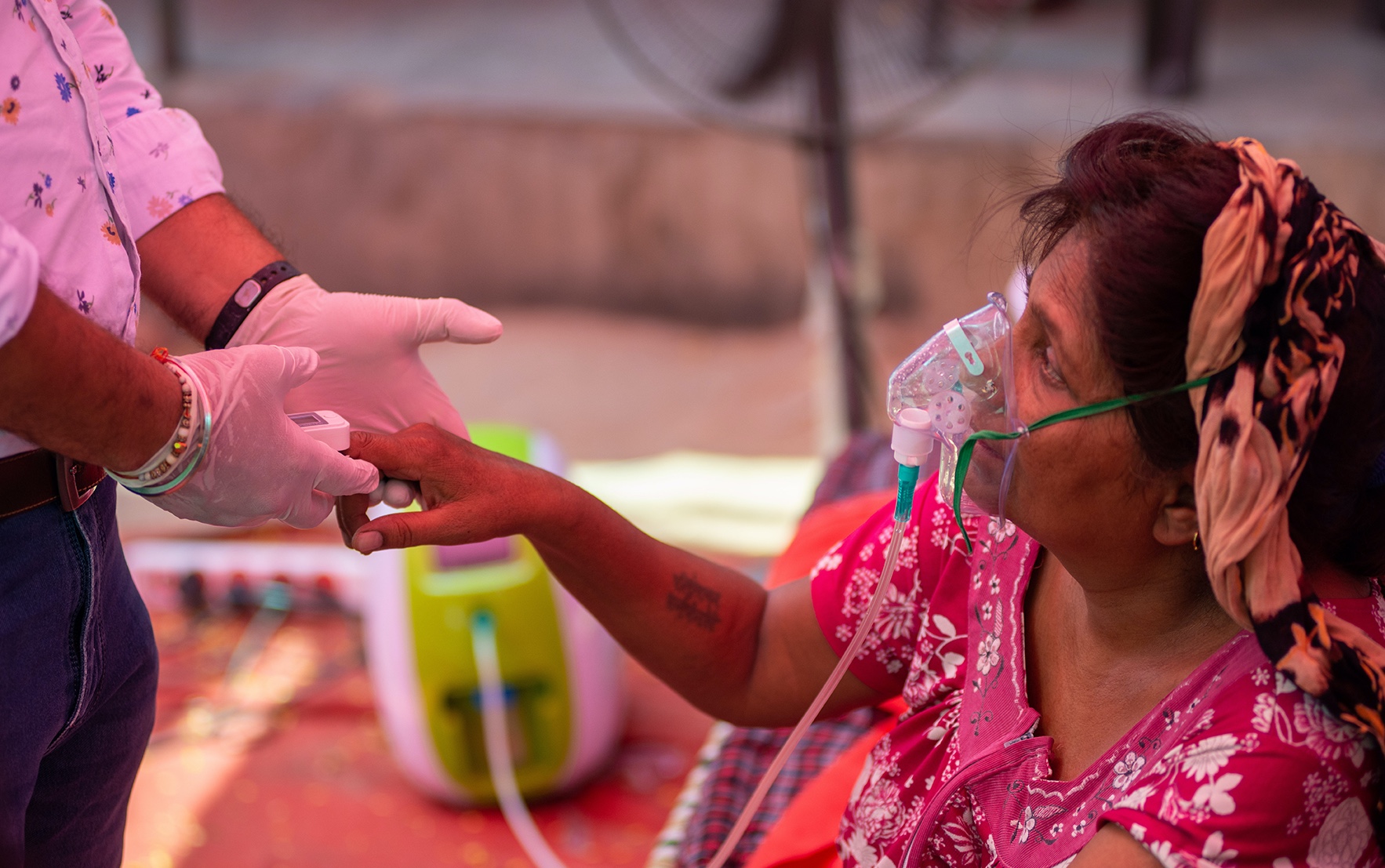Fears of COVID-19 transmission, along with social-distancing measures, have disrupted many important public services worldwide, both directly and indirectly. In India, Phuong Nguyen and colleagues conducted surveys to compare use of public health and nutrition services before, during and after COVID-19 lockdowns in the state of Uttar Pradesh. Despite extra efforts from frontline workers during and after lockdowns, services were disrupted; in addition, demand for those services decreased post-lockdown because of the fear of pandemic health risks. The authors discuss the service supply and community support options for increasing use of essential public health and nutrition services during a time of heightened disease transmission risk and increased need for such services.—John McDermott, series co-editor and Director, CGIAR Research Program on Agriculture for Nutrition and Health (A4NH).
The COVID-19 pandemic has led to major disruptions in preventive health and nutrition services around the world, posing particular risks for vulnerable groups such as young children and pregnant women. Early estimates suggest that these disruptions could lead to more than 1 million additional child deaths and more than 56,000 additional maternal deaths worldwide.
Problems exist in both supply and demand of health and nutrition services. In India, supply disruptions, travel restrictions, and reduced health worker mobilization have exacerbated these risks. On the demand side, households have faced their own obstacles to accessing such services as they confront the pandemic’s negative impacts on livelihoods, employment, food security, and health. To respond to these dire circumstances, the Indian government has taken several measures to ensure the continued delivery of essential services during the pandemic. Thus far, however, very few rigorous empirical investigations have evaluated the impacts of the COVID-19 pandemic in India on public health and nutrition services.
In a recent paper in the Journal of Nutrition, we quantify these effects in Uttar Pradesh, a populous state with over 200 million people. We found that the pandemic caused disruptions to both the supply of and demand for health services that persisted past the lifting of lockdown measures. A particular problem was beneficiaries failing to use available program offerings. Despite frontline health workers’ many efforts to adapt services to pandemic conditions, beneficiaries remained fearful of COVID-19 infection and used those services at significantly lower rates than before the pandemic. This suggests that investments should be targeted at encouraging beneficiary populations along with putting in place adequate safety measures to inspire confidence in them to safely return to health and nutrition services.
This study is based on a survey of frontline health workers and mothers conducted at three critical time periods: Before the start of COVID-19 in December 2019, during India’s nationwide lockdown in April 2020, and after the lockdown was lifted in July 2020. To confirm the trends from our survey data, we used longitudinal administrative health data and conducted in-depth interviews with key government staff at the sub-district level.
During the lockdown, almost all services ceased. Only 4% of frontline health workers provided services at community health and nutrition events, 29% conducted home visits, 1% continued antenatal care, and 5% monitored child growth, corresponding to reductions in the provision of these services ranging from 50 to 99 percentage points. These substantial declines stemmed partly from the challenges that frontline workers encountered during the pandemic, with 42% reporting having to walk long distances, 29% reporting a lack of transportation, and 26% reporting a lack of personal protective equipment (PPE). By July 2020 (post-lockdown), most services had resumed but their availability was still lower than during the pre-pandemic period.
At the onset of the pandemic, frontline health workers adapted their services in a number of ways, including delivering food and micronutrient supplements to homes, ensuring social distancing, using PPE for both workers and beneficiaries, and using phones to coordinate services. In addition, interviews with government staff showed that a key adaptation strategy was prioritizing the most vulnerable beneficiaries.
In contrast to other studies suggesting that a lack of training limited frontline health workers’ ability to perform duties during the pandemic, most frontline workers in our study were well-trained and had adequate knowledge of COVID-19. However, many reported receiving inadequate supplies of PPE and little overtime or hazard pay, hindering their work. Other factors contributing to service disruption included labor and supply shortages, increased workloads among frontline workers, lack of transportation, and poor cooperation from beneficiaries.
On the demand side, the study found a substantial reduction of between 40 and 80 percentage points in household use of these services during the lockdown—without much improvement after it ended. Respondents cited fear of infection, resistance to meeting frontline workers, and lack of available services or providers as key reasons. The only service with increased utilization was food rations, which points to the importance of social protection programs during the pandemic.
These results show the importance of stimulating demand for health and nutrition services as the pandemic continues and social distancing measures evolve. While countries and communities continue their efforts to find ways to alleviate pandemic induced economic shocks and job losses, which have indirect implications on health and nutrition outcomes, it is imperative to continue to strengthen delivery of routine health and nutrition services and to support communities to use them.
Phuong Hong Nguyen is a Senior Research Fellow with IFPRI’s Poverty, Health and Nutrition Division (PHND); Shivani Kachwaha is a PHND Research Analyst based in New Delhi; Rasmi Avula is a PHND Research Fellow in New Delhi; Purnima Menon is a Senior Research Fellow and the theme leader for South Asia Nutrition Programs in PHND; Michael Wang is a Leland Fellow with IFPRI’s Development Strategy and Governance Division.
This work was supported by the Bill & Melinda Gates Foundation through the IFPRI-led Partnerships and Opportunities to Strengthen and Harmonize Actions for Nutrition in India (POSHAN).







